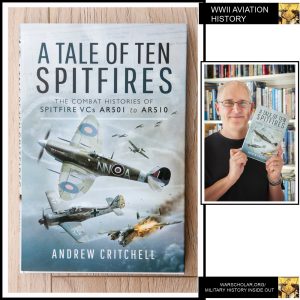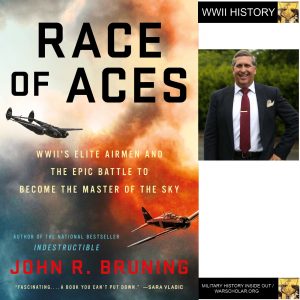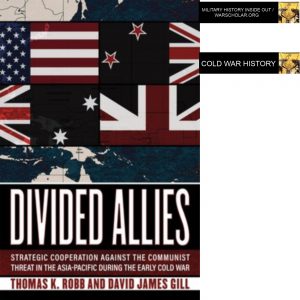 Check out the book here.
Check out the book here.
https://www.pen-and-sword.co.uk/A-Tale-of-Ten-Spitfires-Hardback/p/15274
Spitfire! The name simply conjures up the thrill and adventure of World War II aerial combat. The planes and their crews certainly handled their fair share of the fighting workload for Great Britain and they have been the subject of the imaginations of many warbird aficianados. To this day they are flown for admiring fans.
However, as with any military platforms, it’s even more interesting to get into the nooks and crannies of this aircraft. It had it’s strengths and its weaknesses and it’s these details that can give readers an even greater understanding of how WWII was fought. These planes had personalities, nicknames, and histories just as as their crews did.
Andrew Critchell has photographed warbirds for quite some time and he’s also written this book about Spitfire and some of its operations during WWII. I interviewed Andrew about the book and learned some of the fascinating things about the plane and WWII air operations which you can also learn about in A Tale of Ten Spitfires.
How did you become interested in studying and writing on the subject of your book?
My father and uncles have been into aviation for as long as I can remember and I always had magazines or books on aviation around. My dad was also a keen photographer and airshow goer and so I was exposed to this as well. For some reason it was the piston powered warbirds and the Second World War that really captivated me and I found the living history aspect of this thoroughly absorbing. I remember walking down to school assemblies in Secondary School pretending that my mates and I were B-17 Fortress crews on their way to a briefing for another hellish mission over the Third Reich.
I was also hell-bent on taking better and better airshow photographs and being published. I had my first image used in a Flypast Magazine Battle of Britain Special in 2000 and spent around 10 years doing airshow reports and articles for them. This then dried up, coinciding with the arrival of my kids, so things quieted down. However, I’d had this idea to do an article on Spitfire Vc AR501 which was owned and flown by the Shuttleworth Collection at Biggleswade in Bedfordshire in the UK. I thought about looking at this aircraft’s history plus the next nine Spitfires on the production line, serials AR502 to AR510. I tried to get it published as an article but didn’t have enough historical images for the word count. Over time the thought grew that if a magazine editor was not going to publish it then why not go for the big one and write it as a book.
What aspect of this subject does your book focus on?
A Tale of Ten Spitfires is focused primarily on the combat histories of the aircraft during their time with operational squadrons which lasted from 1942 to 1944. This time coincided with the introduction into service of the Luftwaffe’s new fighter, the Focke Wulf Fw190.
What are the major themes of this book?
The principal theme is an examination of the legend of the Fw190’s supremacy over the Spitfire V which only ended with the widespread introduction into service of the Spitfire IX in 1943. With my Spitfires serving throughout this period it was an opportunity to see how the Fw190 actually impacted the RAF fighter squadrons on a daily basis. Were they being hacked from the skies whenever they met the Luftwaffe’s ‘Butcher Bird,’ or was the reality much more complex.
What resource materials did you use for your research?
I started the project by looking at the Form 78 Aircraft Movement Cards. These gave an outline of which units each Spitfire was assigned to and when, alongside details of any accidents. These also included details of the engine type and when each airframe was struck off charge, either as a result of being scrapped, lost on operations or through an accident. From here I then went to the Form 540 and Form 541 Squadron Operational Record Books. These unit diaries give a detailed breakdown of which operations the squadrons flew on and which aircraft and pilots were involved plus details of victories and losses. On the whole, these were extremely helpful, although the quality of information provided did vary from unit to unit, with a couple of diarists not recording the aircraft serials. This means that my Spitfires could have been involved with more air combats than I was able to confirm.
From there it was a question of picking significant combat operations and tracking down further information. Combat reports were extremely helpful in several instances. My own reference library was my second major source with books being borrowed from a local library if needed. Finally the internet helped a great deal in following up leads.
What were the more prominent and most interesting documentary archives you came across in the research?
The bread and butter of the research were each Squadron’s Operational Record Books. However, it was the combat reports that brought a lot of the operations to life and enabled events to be pieced together in much more detail.
Did you come across any physical objects associated with these specific planes or associated with any of the book’s events?
The most physical object is of course AR501, the Spitfire that inspired the whole book. This aircraft, owned and flown by The Shuttleworth Collection at Old Warden in the UK, was a regular at Shuttleworth airshows until 2005 when the aircraft was grounded so that its engine could be examined as it had been showing a drop in oil pressure. The Collection’s engineers then decided to give AR501 an overhaul, which then turned into a major restoration that was completed in early 2018. The Spitfire took to the air for its first post-restoration flight on 20 March just a few months before the book was finished. I first saw AR501 after her restoration on May 6 at Shuttleworth’s first airshow of the 2018 season, although unfortunately for me, it would be October before I saw AR501 flying again. That was a great sight to see and was also the day I first met Ian Lamaran who was the main man responsible for AR501’s restoration.
Did you develop a strong understanding of the engineering of the Spitfire, its engine and/or its weaponry?
Certainly I know a lot more about the various variants of the Spitfire MkV than I did before! It was also interesting to find out about the later conversion of many Spitfire Vs to LFV status which meant the aircraft were optimised for the best performance at low-level. This led to the nickname ‘clipped, cropped and clapped,’ referring to the clipped wings and cropped supercharger impeller. The clapped reference harder to explain, possibly due to the age of the Spitfires, which would already have been on operations before conversion, or the fact that performance fell off considerably above 12,000 feet. Ironically, I have a much better appreciation of the engineering of the Spitfire since I met Ian!
Is there anything about the physical structure of the Spitfire that you like and alternatively, that you thought wasn’t engineered very well?
I don’t have the engineering background to fully answer this but the Spitfire certainly just looked right from the beginning with its curving lines and elliptical wing. Even with the addition of the 2,000hp Rolls Royce Griffon on the later marks it still looked good, just a lot more aggressive! I have also recently had the privilege of seeing some Spitfires being restored and, at every level, they are basically works of art from the fuselage frames to the wing spars to the engines. Of course, with any technology, especially one being pushed into service under the imminent threat of war, there were limitations. Certainly the undercarriage was always a problem for the Seafire variants, while things like having a liquid cooled engine made you a lot more vulnerable to battle damage. The Spitfires’ metal skinned fuselage was also less tolerant of damage compared to the fabric covered frame structure of the Hurricane.
Did you get the chance to visit any of the places associated with the events you write about in the book?
I know Belgium quite well as my wife is from Bruges so reading about missions, for example, to the coke ovens at Ghent, or when AR509 went on the rampage across Belgium and France crossing the coast at Oost Duinkerke to strafe barges and trains before being shot down by a flak train near Bethune, made it all the more real.
What part of the research process was most enjoyable for you?
The most exciting aspect was finding out that one of my Spitfires had been involved in an aerial combat and shot down or damaged an enemy aircraft. For example, I discovered that AR505 was flown by Canadian Ace John Davidson ‘Mitch’ Mitchner with several of his victories scored in that aircraft. I was able to find the combat reports for these and describe them in the book alongside extracts from letters home that Mitch had written during his training.
What did you discover in your research that most surprised you?
I think the most surprising aspect of my research was seeing how many aircraft and pilots were lost to non-operational causes, engine failures being a particular problem. Out of the ten Spitfires in my sample, only four survived their operational use. Four were lost to accidents or mechanical failures and only two to actual enemy action, one being shot down by an Fw190 and one by flak.
Was there anything you discovered that moved you?
All of the stories I discovered were moving, heroic, and often tragic. For example, one of my early focuses was on AR502 which was shot down by an Fw190 making a single pass as the Spitfires headed back across the Channel after an uneventful escort mission. The Spitfire is powered by a liquid-cooled Rolls Royce Merlin engine. Unlike an air-cooled radial, such as found in the P-47 Thunderbolt, any hit to the coolant system on a liquid-cooled power-plant is usually terminal with the pilot only having minutes until the engine overheats and fails. AR502’s pilot at the time was Czech-born Flying Officer Jan Doucha and, although he was not injured in the attack, his engine was. Doucha was still 25 miles from the nearest land when he was forced to bale out into the chilling waters of the Channel (the time being November). Doucha never made it into his dingy and, despite his Mae West lifejacket inflating, he perished in the water, his body being washed ashore a month later. He was just 28 years old at the time of his death. Another poignant piece of my research was discovering that at least twelve of the pilots who had flown in my Spitfires at some point in their service were then killed in accidents or combat later in the war.
What was the most difficult issue to research?
The only real inconsistency I found surrounded the missions recorded by the Czech Spitfire Squadron diaries for November 7, 1942. Two operations were recorded that day escorting US 8th Air Force bombers to Brest (Doucha being shot down in the first.) According to most sources only one bombing mission was flown with a time over target of 12.30 to 12.39. However, the Czech Spitfires record a second mission to the same target later in the afternoon escorting a force of B-24s. This links with a narrative account from the 93rd Bomb Group which describes the bombers returning to Exeter as it would have been too dark to land by the time they reached their home base of Alconbury. One B-24 was also claimed by a Luftwaffe pilot from 8/JG2 at 5.02pm again tying in with a later mission. Even with valuable help from the US Air Force Historical Support Division I was unable to resolve this.
What do you hope the book will do for readers?
I hope the book will put readers into the cockpit of a Spitfire Vc and show them what it was like to fly and fight during a crucial part of the air war over northern Europe. I also hope it will show the human side, for I have tried to tell a story rather than just run through the facts and figures. It was humbling and eye-opening for me to find out about the day to day realities these men faced and I hope it will be so for readers.
Did you have any difficulties in finishing the book and publishing it and if so, how did you overcome those?
The main difficulty was in finishing the text to a standard I was happy with. I knew that I had to be one hundred percent sure of each fact and assertion that I made. In terms of getting the book published I was fairly lucky in that Pen & Sword were interested in the concept from the very beginning and so getting the contract was fairly straightforward. At that point I was about two-thirds of the way through and, to be honest, I think that was when the hard work really started!
What is your next writing project? Are there other planes you might not have been as enthusiastic about but which this research did you make you enthusiastic about?
Unfortunately I’m a bit of a writing magpie with lots of ideas and projects on the go at once. I would love to do something similar for the Hawker Typhoon for example, but it really depends on how well ‘A Tale of Ten Spitfires’ is received. I have also been photographing warbirds for a very long time and would love to do a book project combining that with my writing. On top of this, I also have several articles on the go. It’s finding the time to get them done that is my biggest challenge!
Do you have any online accounts where people can find more of your work?
Readers can keep up to date with my latest projects, aviation pictures and musings via facebook.com/warbirdphotos and www.aviationphoto.co.uk
Author Biography
Andrew Critchell
Aviation author, historian and photographer.
His main interest is in the air battles of the Second World War.
Author of A Tale of Ten Spitfires.
Check out the book here.
https://www.pen-and-sword.co.uk/A-Tale-of-Ten-Spitfires-Hardback/p/15274
As an Amazon Associate I earn from qualifying purchases.



